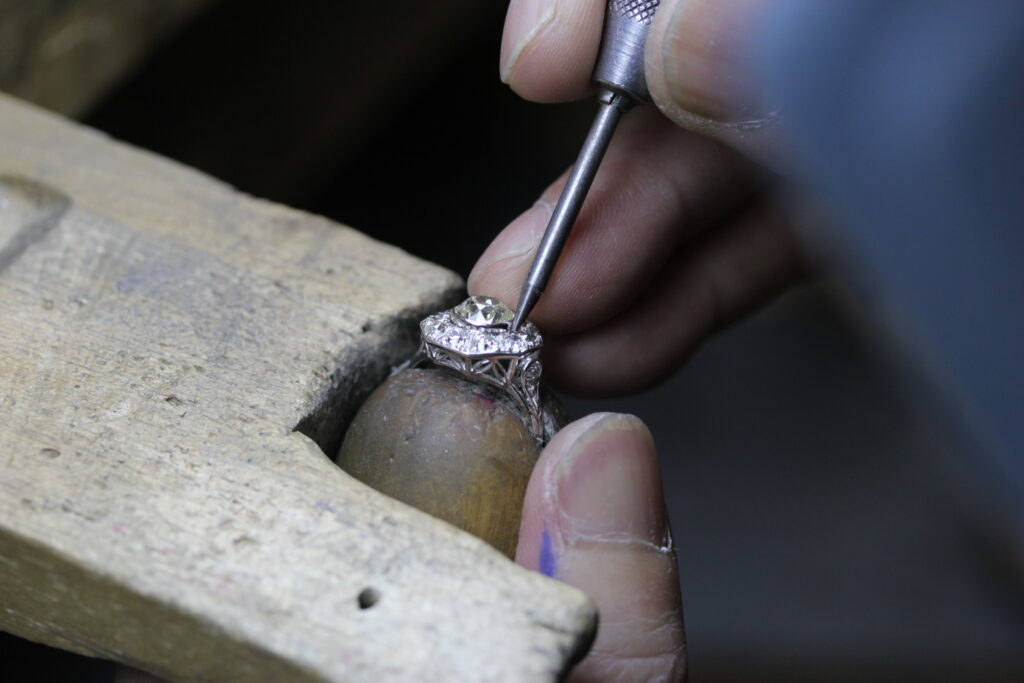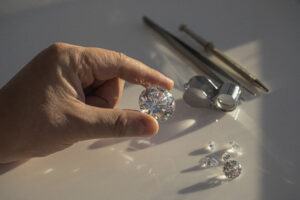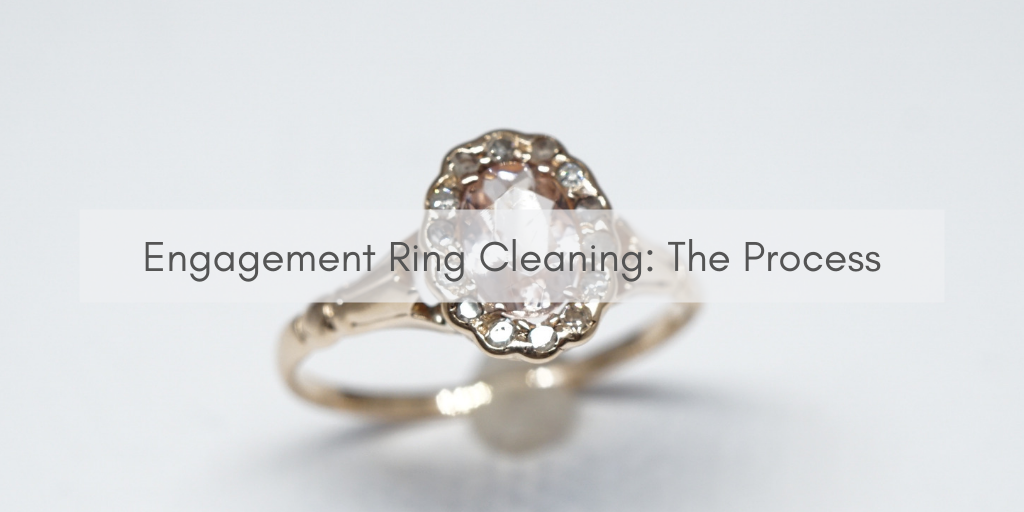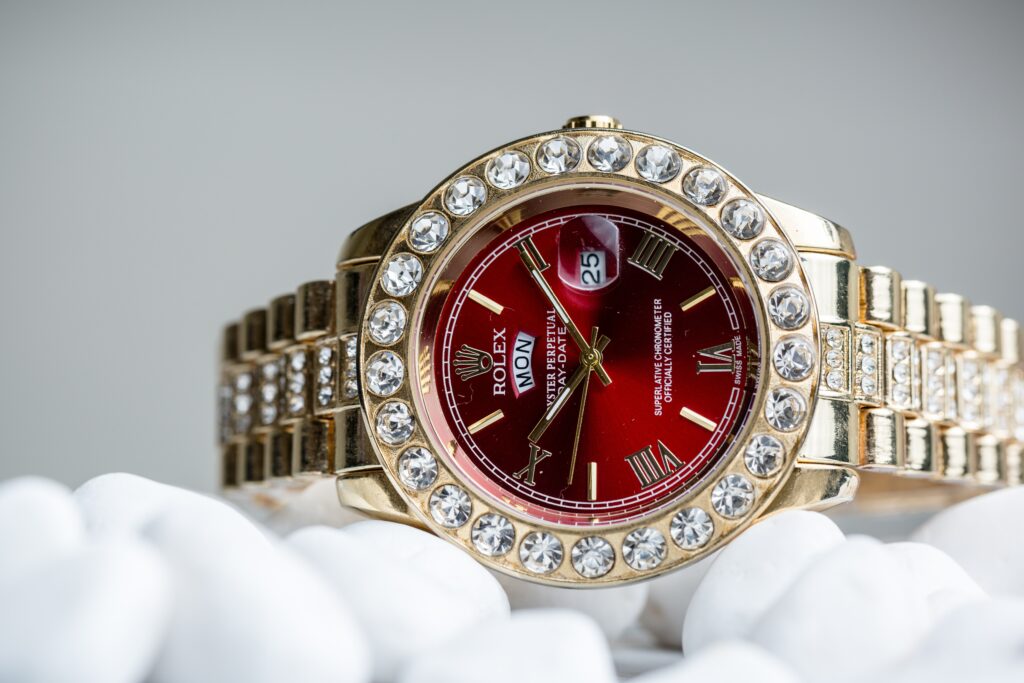Lab Created Diamonds: Are They Worth It?
Written by Anna Currell
September 15, 2022

If you’ve ever been curious about the difference between lab created diamonds and naturally occurring (“real”) diamonds, you’re not alone. There are a lot of myths and misunderstandings about what a lab grown diamond is, from price to authenticity and everything in between. If you’re considering a lab created diamond, or just want to know more, we’ve created a guide to tell you everything you need to know about them.
What are Lab Created Diamonds?
Lab created diamonds are a type of gemstone grown in a laboratory setting through high-tech physical and chemical processes. These diamonds are manufactured, unlike naturally occurring diamonds. Because scientists are able to mimic the atomic structure and chemical properties found in mined diamonds, lab created diamonds can be virtually indistinguishable to the naked eye.
Are Lab Created Diamonds Real?
Yes; although they are grown differently, lab created diamonds are real diamonds! They have the same physical properties, chemical composition, and atomic structure. Their only difference is in how and where they were created.
What’s with the Stigma?
The diamond industry has a history of romanticizing natural diamonds. They’ve become ingrained in traditions like engagements and weddings, and the notion of having a “real” diamond has roots in status symbols. In addition to their rarity, their price tag is way higher because a lot of work needs to go into sourcing diamonds ethically. The stigma against lab created diamonds comes from the idea that mined diamonds are “real,” and that lab created diamonds aren’t. The choice is always yours and you should feel empowered to make the decision that best reflects your values. If ethical sourcing or a lower price point matter to you more than the clout that comes with wearing a mined stone, don’t let a stigma stand in the way of purchasing a beautiful lab created diamond.

Rough, Naturally Occurring Diamonds in a diamond mine
How are Lab Created Diamonds Grown?
To create a diamond in a laboratory, some part of an original diamond (called a “diamond seed”) has to undergo a complex scientific process. The two most common techniques, HPHT and CVD, both attempt to recreate the conditions that produce diamonds in nature.
High Pressure, High Temperature (HPHT)
This technique uses high pressure and high temperature to form a diamond, and it replicates the natural process of diamonds forming in the earth. Scientists use heavy-duty machinery to compress the diamond seed under hundreds of tons of pressure and heat it to 1500°C. Then they introduce a carbon source, like graphite, to the pressurized and heated diamond seed. The combination of heat and pressure makes the carbon crystallize onto the seed, which is what forms the finished lab created diamond.

A lab created diamond before it is cut
Chemical Vapor Deposition (CVD)
Chemical Vapor Deposition was invented more recently and takes a slightly different approach to creating the conditions for a diamond to grow. Scientists place a diamond seed in a vacuum chamber filled with a hydrocarbon gas and apply a microwave beam to break down the gas molecules. The carbon gas crystallizes around the diamond seed, creating a diamond. The two main differences are that CVD uses less pressure than the HPHT method, and CVD uses a gas carbon source while HPHT uses a solid carbon source.
What Are the Benefits of Lab Created Diamonds?
Lab created diamonds are gaining popularity for many reasons. As word spreads that these gems are chemically and atomically no different than the mined versions, people are seeking them out more and more. There are also several benefits to lab created diamonds, and some factors make them even more desirable than naturally occurring diamonds.
Price
One huge benefit to choosing lab created diamonds is their reasonable price. Naturally occurring diamonds can cost around 30% more than their lab created counterparts; this is a huge disparity for two diamonds that look almost identical. Engagement events and weddings can put a lot of strain on your bank account, so saving money on a diamond can help you and your partner splurge on what matters to you most.
Ethical Consumption
Sourcing for natural diamonds has led to lots of conflict. There has been a history of human rights reform in an effort to rectify that, and regulations have been put into place to prevent the unethical sourcing of natural diamonds. The United Nations defines conflict diamonds as “diamonds that originate from areas controlled by forces or factions opposed to legitimate and internationally recognized governments, and are used to fund military action in opposition to those governments.” Lab created diamonds avoid this problem entirely.
Sustainability
Lab created diamonds are also a more sustainable solution for the planet. According to a Stanford University study, lab-grown diamonds emit less than 20% of the carbon dioxide that diamond mining produces. By skipping the step of mining in order to get your diamonds out of the ground and into your jewelry, you can avoid perpetuating unsustainable processes. Lab created diamonds are good for the earth!
Shopping for Lab Created Diamonds
Just like their naturally occurring counterparts, lab created diamonds come in all kinds of styles, shapes, colors, and sizes. You can shop for a specific stone, just as you would if you were searching for a naturally occurring diamond. Lab created diamonds are much less rare than mined diamonds, which gives you the opportunity to shop for a more customized gem without worrying about a huge jump in price.

Are you interested in using a lab grown diamond for a ring? Speak to a jewelry concierge at Quick Jewelry Repairs about our stone setting services; we’d love to help you find the perfect lab grown diamond you can wear proudly. The earth (and your wallet) will thank you!


